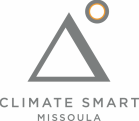|
Last October, I started my 11 month journey as an AmeriCorps Energy Corps service member with Climate Smart Missoula. I was thrilled to get started on my primary project, developing a pilot weatherization program aimed at enhancing energy efficiency, health and safety of manufactured homes, with an emphasis on homes built before the 1976 federal building code. I was surprised to learn that there are 6,000 manufactured homes in Missoula, and about half of them were built before this time. An estimated 1200 of these homes could be lost by 2025 due to deteriorating conditions and issues with moving them. To address and help preserve community members' homes, Climate Smart has partnered with NeighborWorks Montana, the Human Resource Council, and Home ReSource (full disclosure Climate Smart is in awe of our partner organizations). We're now a Team, and our Team has done a lot to set ourselves up for success: defining the scope of our efforts, building community awareness, engaging stakeholders, and providing resources directly to residents. I’m proud of our accomplishments. I’ll share a few examples of the work we’ve done this year and upcoming efforts: 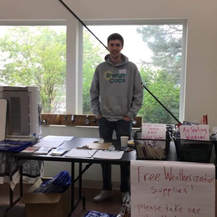 Resource Fair This Spring, our Team hosted the first ever Manufactured Home Resource Fair. Our goal: provide resources for manufactured home residents around Home Repair, Weatherization, Financing, Legal Counseling and Health. Along with our Team, a handful of local organizations joined. MUD co-hosted at their site. The National Center for Appropriate Technology (NCAT) generously donated “light weatherization materials”. We gave away LED lights, weather-stripping, window insulation kits, and water pipe insulation. Climate Smart provided informational pamphlets on the energy savings associated with each. These materials can benefit manufactured homes in particular because upgrades are especially cost-effective, given rates of heat loss and wasted energy. Participants were thrilled with what they received, and we have more left to give out! We're planning mini “pop up” fairs in manufactured home communities in July and August to provide resources directly to residents. To assist with financial counseling, HomeWord provided materials on their financial education program that can help residents looking to save for improvements on their homes. MoFi provided information on their small dollar loan program, a low interest loan specifically for manufactured home repairs. as did the Missoula Federal Credit Union. Additionally, Montana Legal Services offered legal counseling resources. 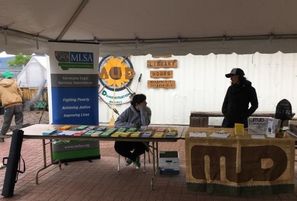 For help with home repair, MUD offered discounts to their “Tool Library” where folks can access tools for home repair projects. Home ReSource provided coupons for their store which has a plethora of hardware, tools, and home repair materials. Other groups shared assistance programs. The goal of the Fair was to support residents as they work to improve the safety, health, energy efficiency, livability and longevity of their homes, and ultimately to preserve existing affordable housing. Manufactured housing, in fact, represents the largest supply of unsubsidized affordable housing in the country. I was grateful for the all the organizations that came out and for the opportunity to help coordinate this effort. I'm hopeful for more of these Resource Fairs in the future! 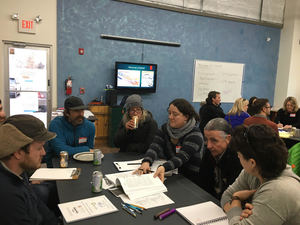 Design Charette We hosted a “design charrette” in February aimed at building community awareness, engaging key stakeholders and generating designs for our energy retrofit. We invited local builders, architects, weatherization professionals and manufactured home residents to design models of skirting that fir our project goals: energy efficiency, health and comfort. We sought improvements that were long lasting, safe and affordable. We split into teams and, working together, successfully generated new and creative ideas for improvements in this sector which we're excited to implement. During the event, I interacted with homeowners who'd received weatherization services from the Human Resource Council (HRC) and gained a sense of the profound effect an energy retrofit can have on an individual's life. A mobile home resident commented that the weatherization work the HRC recently did allowed her to be comfortable and was so thankful that her house “wasn’t cold in the winter anymore”. She also mentioned saving nearly $50/month on utility costs. Speaking to residents personally about the benefits of weatherization was really encouraging. The models created at the design charrette could improve many community members’ lives, making their homes more energy efficient, comfortable, and healthy. Bringing experts to the table was incredibly beneficial, and we plan to use the re-skirting ideas on manufactured homes in July and August. Re-skirting Five Manufactured Homes After all this good work, our Team is now poised to work on skirting replacements for 5 homes in the Missoula area and are in the process of creating a “design refine team”. This team will visit five homes and refine the "charrette" skirting designs based on the specifications of the home and wishes of the homeowner. If you have building, architecture or weatherization experience and are interested in helping with our skirting repair model, please reach out to me, Max. Stay tuned, and check for updates on the Home Rehab section of our web page. - Max Longo, Energy and Climate Coordinator
2 Comments
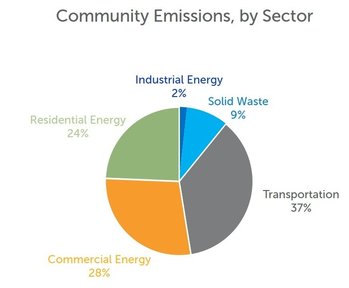 Here in Missoula, this winter sure seemed long, wet and cold – good news for mountain snowpack. But as a new homeowner, this winter was rough on my budget. There’s nothing like getting a $200 energy bill in the mail to get you thinking seriously about saving energy! When we moved in to our house last fall, we had tried a few basic tricks to reduce energy use: replacing old incandescent light bulbs with LEDs; installing programmable thermostats so our heat was only on when we needed it; putting on storm windows to reduce heat loss. Even so, this winter was a wakeup call. I know I’m not alone: many of us want to shrink our carbon footprint - and our bills! But we don't always know how to take the next step. At our April Monthly Meetup last Thursday, the conversation was all about energy efficiency and conservation – and the particular challenges and opportunities around energy use in our community. To put things in context, we were excited to share the results of our first community-wide greenhouse gas emissions inventory, hot off the press last week! The inventory is a complete account of all the emissions sources within the Missoula urban development boundary – and gives us a baseline from which to measure progress towards long- and short-term climate mitigation goals. (Check out the full report here and an article about it in the Missoula Current here!) As the pie chart shows, residential energy use makes up nearly a quarter of our community’s emissions. Not only is this a big slice of the pie, but it’s an area where everyone can get involved. Our individual efforts make a real impact when they are part of a collective movement. That’s why we’re challenging Missoula to be Energy Smart and reduce our use 10% by 2018!
We hope you’ll take us up on our Energy Smart challenge and commit to doing your part to save energy! Here at Climate Smart, we don’t have a silver bullet for how best to track and reduce our energy use, but we’re not going to let perfection get in the way of progress. We’re ready to help Missoula start saving energy - here’s what you can do TODAY to join us:
I’ll leave you with a few of the great energy-saving ideas that came out of our meetup - this is the kind of creative thinking we love to see. Have more ideas? Want to help make these happen? Let us know!
Thanks to everyone who joined us for another great gathering last week! Mark your calendars for the next Monthly Meetup on local food and agriculture – Thursday, May 4th, 5-7pm at Imagine Nation! -Abby This may sound strange, but I have many childhood memories about waste. I remember picking up trash at campsites and on walks along the beach; my dad methodically separating recyclables in the bins under the kitchen sink; my grandma rinsing out plastic ziplock bags to be reused until they fell apart; my mom bringing her reusable grocery bags to the store before it was cool. We didn’t have a lot of money, so things were used and reused. Leftovers were a hot commodity. The underlying message was: nothing goes to waste. When I moved to Montana a few years ago, it was the first place I’d ever lived where there my recycling wasn’t automatically picked up along with my trash each week. Paying extra for recycling?! That seemed crazy – no wonder it wasn’t common. It’s true, we’ve got our work cut out for us here. Montanans make more waste than the national average, at 7 lbs per person, per day, compared with 4.3 lbs. Another dubious distinction: Missoula’s recycling rate of 22% is well below the national average of 35%. I often talk to people who share my frustration about the lack of recycling options here in Missoula. But I’ve also come to learn that the problems with waste are much bigger than what happens to stuff when we dispose of it, either in the landfill or the recycling bin.
 The Missoula Landfill. The Missoula Landfill. Every pound of waste we recycle or throw away represents a shocking 71 pounds of waste that was created upstream (through raw materials extraction, manufacturing, transportation, and everything that happens before stuff gets to us)
Ultimately, we can’t recycle our way to Zero Waste – there’s a reason Reduce and Reuse are the first two Rs! Zero Waste is a lofty aim, but Missoula is making progress. In fact, one big goal within Climate Smart Missoula’s Zero Waste Bucket has already been checked off the list: in February 2016, our city council passed a Zero Waste Resolution, which committed our community to creating a Zero Waste Plan, a blueprint for reaching the ultimate goal of a 90% reduction in waste by 2050. 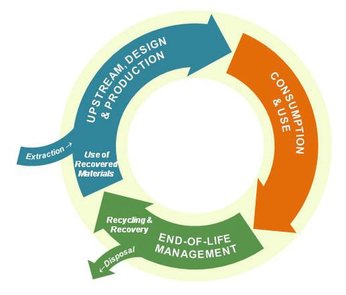 Courtesy Oregon DEQ Materials Management: http://www.oregon.gov/deq/mm/Pages/default.aspx Courtesy Oregon DEQ Materials Management: http://www.oregon.gov/deq/mm/Pages/default.aspx Get Involved! The process of creating that plan is now underway, and to make it a real, practical guide and not just shelf art, we need your input and ideas! Do you think there should be an incentive for developers to hire a deconstruction crew instead of demolition? Would you like to see a municipal composting program for food scraps? Tell us! Here’s how to get involved:
Moving toward zero waste is about recognizing the impact our stuff has across its life cycle – where it comes from, how we use it, and what happens to it when we're done using it. When we Reduce, Reuse, and Recycle, we come closer to living within the natural limits of our planet, creating a healthier, wealthier, and more responsible community for generations to come. -Abby |
AuthorsAbby Huseth Archives
July 2024
Categories
All
|
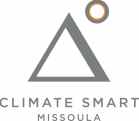
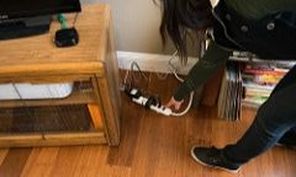
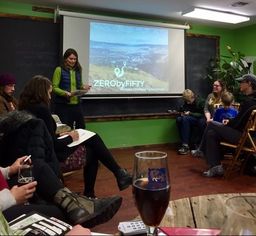
 RSS Feed
RSS Feed


